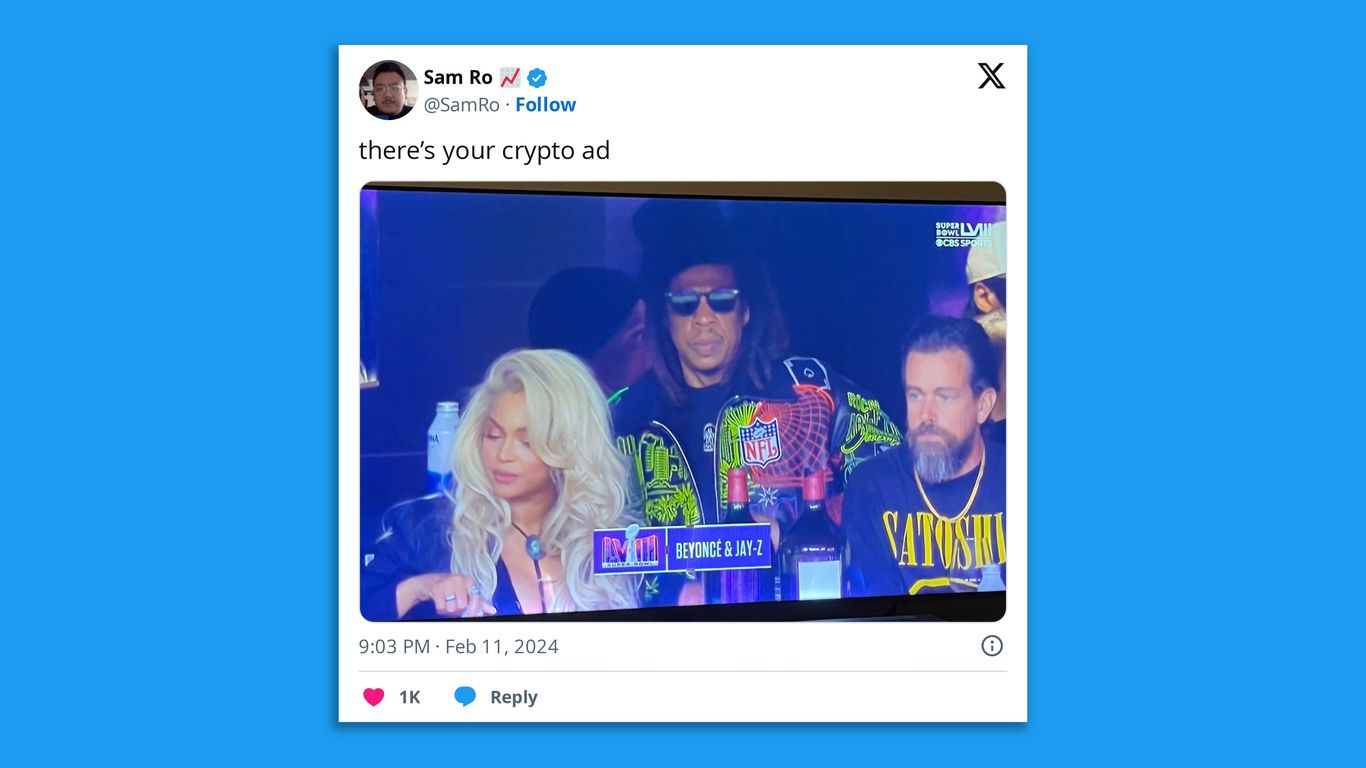Every year, the Super Bowl is more than just a game; it’s an epic cultural event that brings millions of people together. And let’s be real, folks, the famous Super Bowl ads are just as hyped as the actual game itself. Whether you’re into football or not, these commercials have a way of capturing our attention and staying in our memories long after the confetti settles. So buckle up, because we’re diving deep into the world of Super Bowl ads and uncovering what makes them so darn special.
Think about it—Super Bowl ads aren’t just commercials. They’re masterpieces of storytelling, humor, drama, and sometimes even a little controversy. Brands spend millions of dollars to air their spots during the big game, knowing they’ll reach an audience of hundreds of millions. It’s like the Oscars for advertising, but with way more snacks and fewer speeches.
But why do these famous Super Bowl ads matter so much? Well, they’re not just about selling products. They’re about creating connections, sparking conversations, and leaving a lasting impression. In this article, we’ll explore the history, evolution, and impact of these iconic ads, so you can understand why they’ve become such a massive deal. Let’s get started!
Read also:Who Is Luke Evans Married To Unveiling The Personal Life Of A Hollywood Heartthrob
Table of Contents
- The History of Famous Super Bowl Ads
- The Impact of Super Bowl Ads on Pop Culture
- The Budget Behind Super Bowl Ads
- Types of Super Bowl Ads That Work
- Iconic Examples of Famous Super Bowl Ads
- Emerging Trends in Super Bowl Advertising
- The Data Behind Super Bowl Ad Performance
- Strategies for Creating Memorable Super Bowl Ads
- Controversial Super Bowl Ads and Why They Work
- The Future of Super Bowl Ads
The History of Famous Super Bowl Ads
Back in 1967, when the first Super Bowl aired, the ads were simple and straightforward. But over the years, they’ve evolved into full-blown productions that rival Hollywood blockbusters. The famous Super Bowl ads we know today started gaining traction in the 1980s, thanks to Apple’s iconic “1984” commercial. That ad set the tone for what was to come—bold, creative, and unforgettable.
Since then, brands have upped their game, investing in A-list talent, cutting-edge technology, and innovative storytelling. And let’s not forget the humor—Super Bowl ads wouldn’t be the same without a good laugh or two. But how did we get here? Let’s take a look at the milestones that shaped the history of these famous ads.
Key Moments in Super Bowl Ad History
- 1984: Apple’s “1984” commercial aired, revolutionizing the way brands approached Super Bowl advertising.
- 1990s: Budweiser’s “Frogs” and “Whassup?” campaigns became cultural phenomena.
- 2000s: Pepsi and Coca-Cola battled it out with celebrity-endorsed ads, while Doritos introduced user-generated content.
- 2010s: Technology took center stage, with brands using augmented reality and social media to engage audiences.
Each decade brought something new to the table, proving that Super Bowl ads are a reflection of the times we live in. But one thing remains constant—they’re all about grabbing our attention and leaving a lasting impression.
The Impact of Super Bowl Ads on Pop Culture
Super Bowl ads don’t just sell products; they shape culture. Think about it—how many times have you quoted a funny line from a commercial or shared a video of a particularly memorable spot? These famous Super Bowl ads have a way of infiltrating our daily lives, becoming part of the conversation long after the game is over.
And it’s not just the humor that sticks with us. Some ads tug at our heartstrings, while others challenge societal norms. Brands use these ads as a platform to tell stories that resonate with viewers, whether it’s about inclusivity, sustainability, or simply enjoying life. But what makes a Super Bowl ad truly impactful?
Elements of a Memorable Super Bowl Ad
- Emotional Connection: Ads that evoke strong emotions tend to stick with us longer.
- Humor: A good laugh goes a long way in making an ad memorable.
- Storytelling: A well-crafted narrative can captivate audiences and leave a lasting impression.
- Innovation: Brands that push the boundaries of creativity often create the most talked-about ads.
It’s this combination of elements that makes Super Bowl ads so powerful. They’re not just about selling products; they’re about creating experiences that viewers want to share.
Read also:Mariska Hargitay And Dad A Heartwarming Journey Through Love Legacy And Life
The Budget Behind Super Bowl Ads
Talk about big bucks! Producing a famous Super Bowl ad isn’t cheap. In fact, it can cost millions of dollars to create and air a single spot. But why are brands willing to shell out so much money for these ads? The answer lies in the sheer size of the audience. With hundreds of millions of viewers tuning in, the potential return on investment is huge.
But it’s not just about the airtime. Brands also invest heavily in production quality, hiring top-tier directors, actors, and special effects teams to bring their visions to life. And let’s not forget the marketing campaigns that surround these ads, from teaser trailers to social media buzz. All of this adds up to create a multi-million-dollar production that’s worth every penny—if done right.
Breaking Down the Costs
- Airtime: As of 2023, a 30-second spot during the Super Bowl costs around $7 million.
- Production: Depending on the complexity of the ad, production costs can range from $500,000 to $2 million.
- Marketing: Brands spend additional funds on promoting their ads through social media, TV, and other channels.
It’s a big investment, but for many brands, the payoff is worth it. The exposure and engagement generated by a successful Super Bowl ad can lead to increased sales, brand awareness, and customer loyalty.
Types of Super Bowl Ads That Work
Not all Super Bowl ads are created equal. Some resonate with audiences, while others fall flat. So, what makes a Super Bowl ad successful? It all comes down to the type of ad and how well it connects with viewers. Here are some of the most effective types of Super Bowl ads:
1. Humorous Ads
Laughter is the best medicine, and it’s also a great way to make an ad memorable. Brands that incorporate humor into their Super Bowl spots often see higher engagement and recall rates. Think of ads like Bud Light’s “Dilly Dilly” campaign or Snickers’ “You’re Not You When You’re Hungry” series. These ads not only entertain but also reinforce brand messaging in a fun and lighthearted way.
2. Emotional Ads
Sometimes, the best way to connect with viewers is through emotion. Ads that tug at the heartstrings or inspire viewers tend to leave a lasting impression. Think of Coca-Cola’s “Taste the Feeling” campaign or Google’s “Loretta” ad, which celebrated the power of technology to bring people together. These ads remind us of the human connection behind the products we use every day.
3. Storytelling Ads
A good story can transport viewers to another world, and Super Bowl ads are no exception. Brands that use storytelling to convey their message often create ads that stick with viewers long after the game is over. Take, for example, Procter & Gamble’s “Thank You, Mom” series, which celebrated the role of mothers in shaping athletes’ lives. These ads not only promote the brand but also tell a compelling story that resonates with audiences.
Iconic Examples of Famous Super Bowl Ads
Some Super Bowl ads are so iconic that they’ve become part of pop culture history. These ads not only entertained viewers but also pushed the boundaries of creativity and innovation. Let’s take a look at some of the most famous Super Bowl ads of all time:
1. Apple’s “1984”
This ad aired during the first Super Bowl broadcast and is often credited with revolutionizing the industry. Directed by Ridley Scott, the commercial depicted a dystopian world where a young woman throws a hammer at a giant screen, symbolizing the launch of the Macintosh computer. It was bold, daring, and unlike anything viewers had seen before.
2. Coca-Cola’s “Mean Joe Greene”
This classic ad from the 1970s featured football legend Joe Greene receiving a soda from a young fan. The ad’s simple yet powerful message of kindness and connection made it a fan favorite for years to come.
3. Budweiser’s “Puppy Love”
Who can resist a cute puppy? This ad featured a heartwarming friendship between a puppy and a Clydesdale horse, capturing the hearts of viewers worldwide. It’s a perfect example of how emotion can make an ad truly unforgettable.
Emerging Trends in Super Bowl Advertising
As technology continues to evolve, so do the trends in Super Bowl advertising. Brands are embracing new platforms and formats to engage audiences in innovative ways. Here are some of the emerging trends shaping the future of Super Bowl ads:
1. Augmented Reality
AR is becoming a popular tool for brands looking to create immersive experiences. By using AR, viewers can interact with ads in ways that were previously impossible, making the experience more engaging and memorable.
2. Social Media Integration
Social media has become an essential part of the Super Bowl ad experience. Brands are using platforms like Twitter, Instagram, and TikTok to generate buzz and encourage viewer participation. From live polls to behind-the-scenes content, social media is a powerful tool for extending the reach of Super Bowl ads.
3. Sustainability
With growing concerns about the environment, many brands are using their Super Bowl ads to promote sustainability and social responsibility. These ads not only showcase products but also highlight the brand’s commitment to making a positive impact on the world.
The Data Behind Super Bowl Ad Performance
Numbers don’t lie, and when it comes to Super Bowl ads, the data tells a compelling story. From engagement rates to social media impressions, brands are using analytics to measure the success of their ads and make informed decisions for future campaigns. Here are some key statistics to consider:
- Audience Size: The Super Bowl attracts an average of 100 million viewers annually.
- Social Media Engagement: Super Bowl ads generate millions of social media mentions and interactions.
- Brand Recall: Viewers are more likely to remember brands that air ads during the Super Bowl.
These numbers highlight the immense value of Super Bowl ads and why brands continue to invest heavily in them. But it’s not just about the numbers; it’s about creating a connection with viewers that goes beyond the screen.
Strategies for Creating Memorable Super Bowl Ads
So, you want to create a famous Super Bowl ad? It’s not as simple as throwing some money at a production company and hoping for the best. Successful Super Bowl ads require careful planning, creativity, and a deep understanding of your audience. Here are some strategies to help you create an ad that stands out:
1. Know Your Audience
Understanding who you’re trying to reach is crucial. Whether it’s millennials, sports fans, or families, tailoring your message to resonate with your target audience is key to creating a successful ad.
2. Tell a Story
Stories are powerful tools for connecting with viewers. By crafting a narrative that highlights your brand’s values and message, you can create an ad that sticks with viewers long after the game is over.
3. Embrace Innovation
Don’t be afraid to push the boundaries of creativity. Whether it’s using new technology or experimenting with unconventional formats, innovation can set your ad apart from the rest.
Controversial Super Bowl Ads and Why They Work
Not all famous


